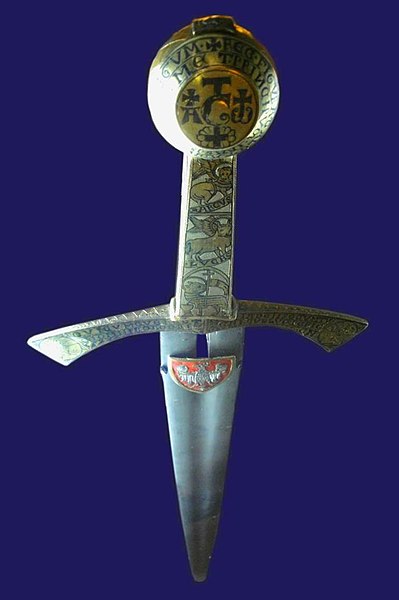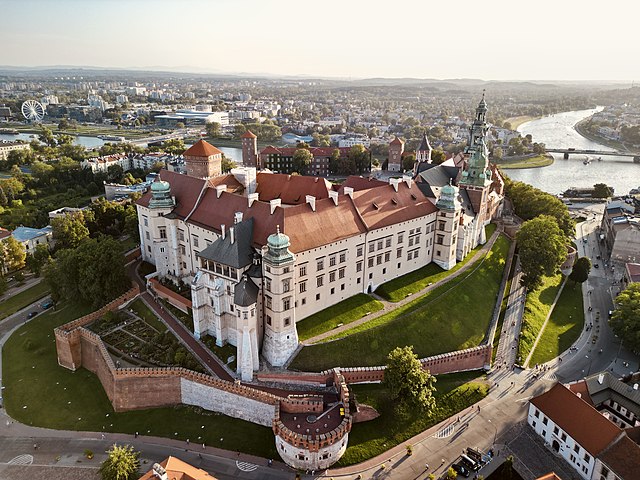Szczerbiec is the ceremonial sword used in the coronations of most Polish monarchs from 1320 to 1764. It now is displayed in the treasure vault of the royal Wawel Castle in Kraków, as the only preserved part of the medieval Polish crown jewels. The sword is noted for its hilt, decorated with magical formulae, Christian symbols, and floral patterns, as well as for the narrow slit in the blade which holds a small shield with the coat of arms of Poland. The name of the sword, derived from the Polish word szczerba and wrongly its meaning is perceived as "the Notched Sword" or "the Jagged Sword", though the edges of its blade are straight and smooth. Proper meaning and rendering into English would be "the Notching/Jagging Sword" — as "a sword that is meant to notch/jag other weapons".
Obverse side of Szczerbiec (perspective-distorted)
Reverse side of Szczerbiec (perspective-distorted)
Szczerbiec on display in the Wawel Castle treasure vault
Jan Matejko, Boleslaus the Brave and Sviatopolk at the Golden Gate of Kyiv (1883)
The Wawel Royal Castle and the Wawel Hill on which it sits constitute the most historically and culturally significant site in Poland. A fortified residency on the Vistula River in Kraków, it was established on the orders of King Casimir III the Great and enlarged over the centuries into a number of structures around an Italian-styled courtyard. It represents nearly all European architectural styles of the Medieval, Renaissance and Baroque periods.
The Wawel complex, with the cathedral on the right and the castle on the left.
An older section of Wawel from the 14th century, now the Cathedral Museum.
The Wawel complex, with the Cathedral on the left and Castle to the right. Over centuries, various styles of architecture have evolved side by side.
Smok Wawelski, Wawel's legendary dragon








